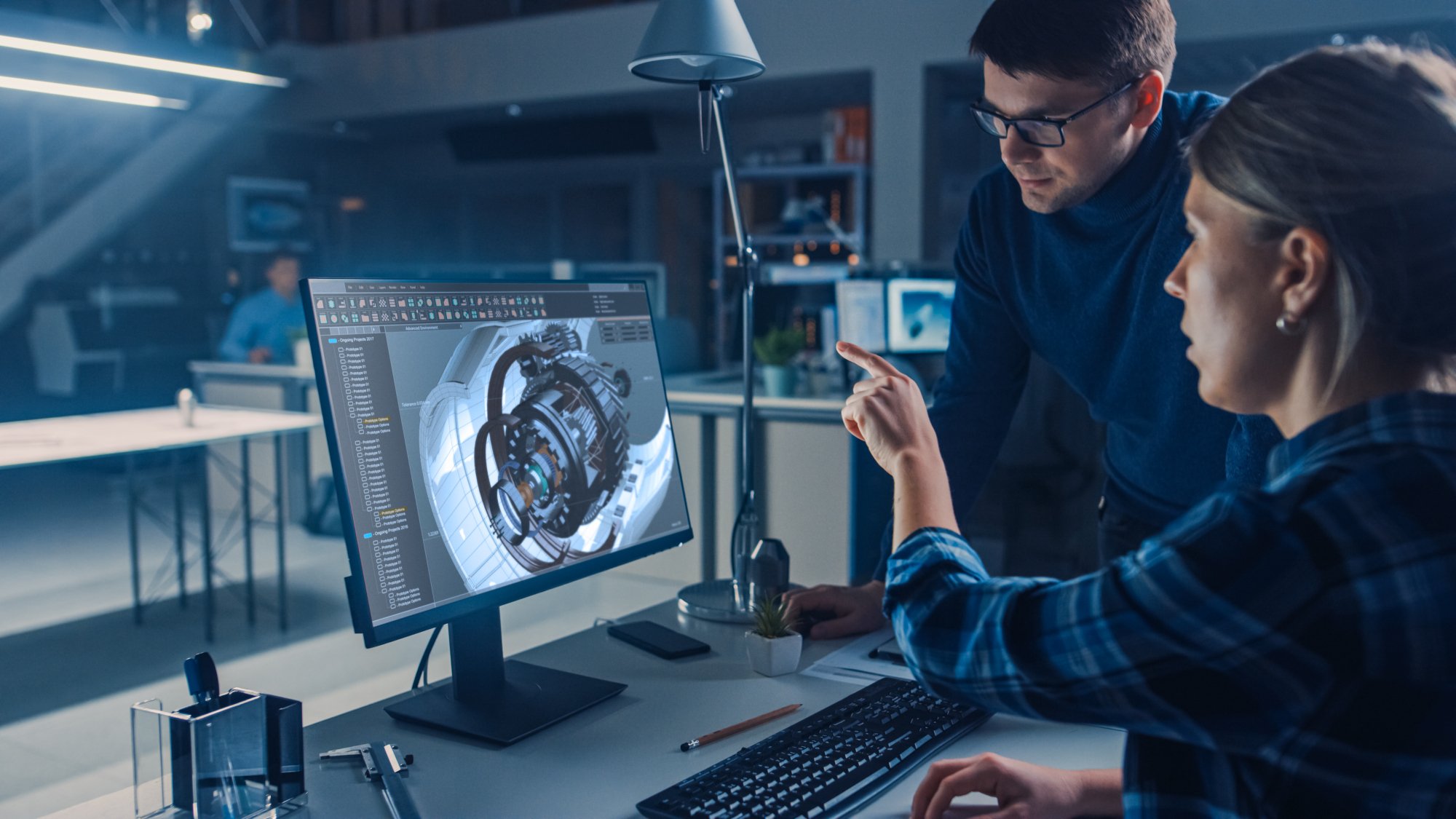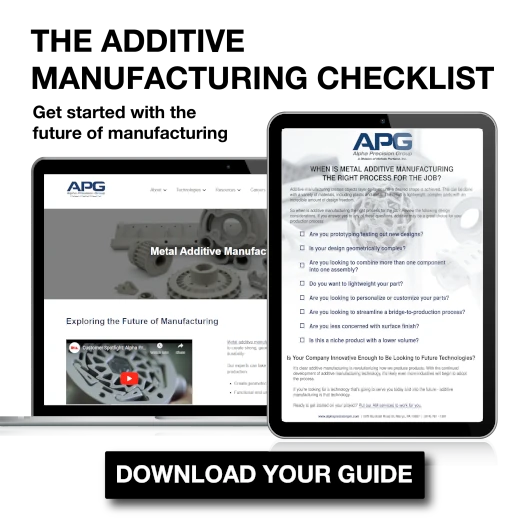
The Future of 3D Printing: Will It Ever Replace Traditional Manufacturing?
If you’ve been in the industry for a while, you know that all manufacturing methods have their own unique set of advantages and disadvantages. Traditional manufacturing methods, such as injection molding and machining, have been the industry standard for decades, while 3D printing, also known as additive manufacturing, is a newer technology that’s been rapidly gaining popularity in recent years (and for a good reason).
As the old saying goes, “out with the old and in with the new.” -- With all the inherent advantages 3D printing has to offer, it will surely replace traditional methods, right?
Whether you’re a seasoned engineer or just starting out, join us while we compare and contrast traditional manufacturing methods versus 3D printing to find out once and for all if 3D printing will ever replace traditional methods.
Difference Between 3D Printing & Traditional Manufacturing
Let’s begin by examining how both manufacturing processes work:
Traditional Manufacturing
In traditional manufacturing, raw materials such as metals, plastics, ceramics, and composites are shaped into the desired product using machines, tools, and techniques like milling, turning, grinding, and casting. The manufacturing process often involves multiple steps, each adding a new layer or component to the product until it’s complete.
3D Printing
3D printing is a process of creating three-dimensional objects by adding layer upon layer of material. It involves using a 3D printer, which reads a digital file containing the design specifications of the object to be created. The printer uses this information to add layers of material on top of each other until the object is fully formed.
The exact process will vary depending on which type of 3D printer you use (powder bed fusion, binder jetting, direct energy deposition, etc.).
3D Printing Versus Traditional Manufacturing
In recent years, 3D printing has emerged as a popular alternative to traditional manufacturing methods. While traditional manufacturing techniques such as injection molding, casting, and stamping have been around for decades, 3D printing offers a new approach to producing parts and products. Before deciding on a process, it’s important to understand their advantages and disadvantages.
Advantages of Additive Manufacturing Over Traditional Manufacturing
Additive manufacturing has taken the manufacturing industry by storm with its unique approach to creating complex shapes and designs. Below is a chart comparing 3D printing with traditional manufacturing in key areas, including design flexibility, time-to-market, waste, and low and high-volume production, followed by a more detailed explanation of each point.
-1.png?width=2935&height=963&name=Additive%20Manufacturing%20vs%20Traditional%20Chart%20(1)-1.png)
Design Flexibility
Traditional manufacturing methods are often limited by the design constraints of the tooling used. Alternatively, 3D printing can produce parts with greater design flexibility, allowing for complex shapes and features that may be impossible or difficult to produce with traditional methods.
Time-to-Market
Longer lead times are often associated with traditional methods, due to the need for tooling and setup. At times, they may take months to prepare, costing up to thousands for a single mold. In contrast, 3D printing can produce parts quickly without the use of molds and with minimal setup time, reducing time-to-market and enabling faster prototyping and product development.
Cost-Effectiveness for Low-Volume Production
Low-volume production runs can be expensive for low-volume production runs due to the cost of tooling and setup. Additive manufacturing is more cost-effective for low-volume production runs since there is no need for tooling or setup, making it ideal for small-batch production or customized parts.
Waste
Traditional manufacturing methods, such as subtractive methods, often generate waste materials during production, such as scrap metal or excess plastic. 3D printing produces less waste since it only uses the materials needed to produce the part, reducing material waste and environmental impact.
Advantages of Traditional Manufacturing Over Additive Manufacturing
While additive manufacturing has its own unique advantages, traditional manufacturing methods offer a number of benefits in certain situations that can’t be matched by 3D printing. Some of the advantages of traditional over additive manufacturing include:
Production Time
Although additive manufacturing helps bypass wait times for tooling, thereby shortening time to market, there are still times where traditional processes may be more efficient.
One of the main advantages of traditional manufacturing methods over 3D printing is the speed of production (although modern additive technology is becoming faster with advancements), especially for simple shapes and designs. Traditional manufacturing techniques are capable of producing large volumes of parts quickly and efficiently, which can be essential for meeting the demands of high-volume production runs.
Cost of High-Production Runs
While 3D printing is highly cost effective for low-volume production runs, it may be more expensive for mass production - but not always.
For example, if you’re mass producing complex parts with intricate geometries, 3D printing may be most cost effective, allowing you to bypass lengthy wait times and the cost of tooling. Additionally, if you’re working on prototypes, additive manufacturing may be the best choice because design changes are as simple as editing the design file.
In contrast, if the part you’re mass producing is simple without a complex geometry and you don’t anticipate any design changes, traditional manufacturing may be the better option.
Material Availability
3D printing is compatible with many different materials, but traditional manufacturing is still compatible with a wider range. The list of materials that can be used with additive technology is constantly expanding, so it’s important to contact your manufacturer for an updated list of available materials before you make a decision.
Traditional Manufacturing & 3D Printing: Working in Tandem
Let’s get back to our original question: Will 3D printing ever replace traditional manufacturing?
Probably not.
Although additive manufacturing and traditional manufacturing methods are often viewed as competing technologies, the truth is that these two methods can work together in a complementary way to achieve the best of both worlds. By combining the strengths of each technology, manufacturers can create more complex and sophisticated products with greater efficiency and accuracy.
Below, we outline several of the ways in which the two technologies can work in tandem:
Molds & Tooling
As we mentioned previously, one downside to traditional manufacturing methods is the need for molds and tooling, which cost time and money. 3D printing can be used to create rapid prototypes of molds or tooling, which can be tested and refined before being manufactured using traditional methods. This helps reduce the time and cost associated with traditional prototyping and tooling, while ensuring the final product meets the desired specifications.
Hybrid Products
Imagine all the parts that go into the production of a car - some are simple and others are complex. By strategically combining traditional manufacturing methods for the bulk of the simpler components with 3D printing technology, you can maximize your efficiency, minimize production costs, and still maintain the exceptional degree of customization and complexity required in the industry. This approach empowers you to leverage the cost-effectiveness and speed of traditional techniques while utilizing 3D printing to fabricate custom and complex components that are impractical, if not impossible, to produce using traditional methods alone.
Jigs, Fixtures, & Other Manufacturing Aids
Along with molds and tooling, additive manufacturing can be used to quickly produce jigs, fixtures, and other manufacturing aids that improve the efficiency and accuracy of traditional manufacturing processes, such as drill jigs, workholding fixtures, assembly fixtures, welding jigs, cutting tools, and dies. These aids can be custom-designed and fabricated to suit specific manufacturing processes and product designs and can include drill jigs, workholding fixtures, assembly fixtures, welding jigs, cutting tools, and dies.
The Future of Manufacturing
So will 3D printing ever fully replace traditional manufacturing?
Probably not.
Although additive manufacturing holds many benefits over traditional manufacturing, there are still times where traditional manufacturing will increase efficiency and cost-effectiveness. The choice between these two methods ultimately depends on the specific requirements of the application, the volume of production, the complexity of the parts, and the desired properties of the finished product.
If you’re thinking additive might be the right process for your application, but you’re still on the fence, feel free to reach out to one of our experts with any questions you may have.

